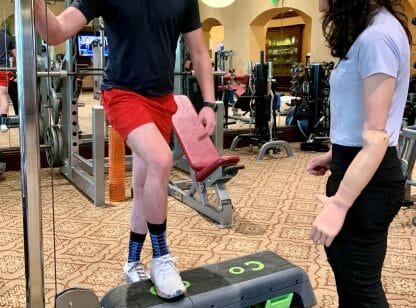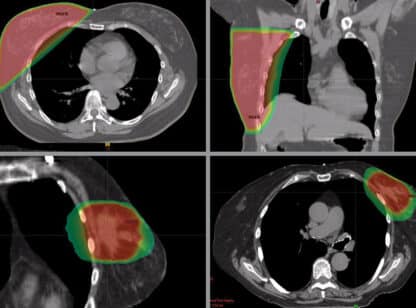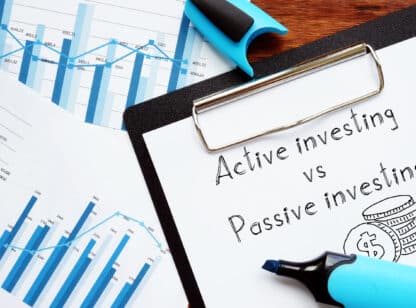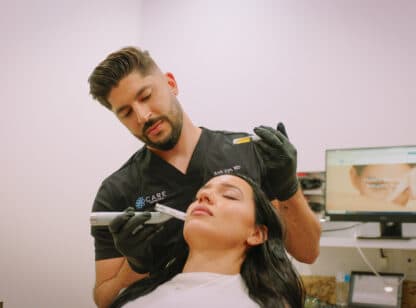What’s the foundation for a vibrant and inspired life? Balance. A return to homeostasis is the key for optimal functioning. This is no easy task in our busy culture, and especially difficult for working women.
In honor of Women’s History Month, I looked at how women and work have evolved over time and what simple tools we can use to create the balance needed to support our greatest potential.
A brief history of women in the workplace
Until World War II women in the U.S. held traditional roles in the home. During the war, millions of women joined the workforce to support the country’s production efforts while men were fighting overseas.
When soldiers returned in 1945, women were expected to go back to life as homemakers, but the spark had been lit and many chose to keep working. For the first time in history, women made up one-third of the peacetime labor force.
By 1964, with the birth of the baby boomer generation, women’s identities as wives and mothers strengthened. Even so, approximately 40% of women with young children, and at least half of women with older children, went to work.
High productivity, limited freedom
Without popular support, working women had little influence and very few services to help them achieve work/life balance. Although they were contributing to the country’s productivity and earning their own money, women’s rights were often restricted.
Here are surprising things women could not do in the 1960s:
- Get a credit card. Unmarried women were refused credit cards. If a married woman applied, her husband was required to cosign.
- Serve on a jury. In most states women were considered too fragile and sympathetic by nature to remain objective jurors. It wasn’t until 1973 that women could serve on juries in all 50 states.
- Get an Ivy League education. Women could not attend most Ivy League schools until the 1970s and Columbia University restricted admission until 1981.
- Get paid a decent wage. In 1963, The Kennedy Commission reported that women earned 59 cents for every dollar that men earned, and they were kept out of lucrative professional positions.
The tide begins to turn
In 1964, the National Organization of Women (NOW) was founded to “enforce full equality for women in truly equal partnership with men.” NOW challenged Pan American Airline’s rules requiring stewardesses to meet a certain height requirement, maintain a set weight, resign if they got married, maintain soft hands and face, and retire at age 32.
NOW’s work along with Title VII of the Civil Rights Act prohibiting discrimination in employment “because of race, color, religion, sex, or national origin” turned the tide and things began to change for women in the workplace. There are still many legal issues of equality to be resolved but women now have a voice, and often participate in – or manage – workplace policymaking.
“We’ve come a long way, baby” and there’s a long road ahead, but the path has been paved. Policies like flexible family time, sexual harassment laws and equal pay continue to change in ways that support women’s roles.
Work/life balance, the new frontier
How can women create balance and wellness while managing family home life, work life and their own needs? Women, by nature, are wired to try to do it all. They notice what needs to be done, and they often do rather than delegate.
In time, our culture will create systems to distribute the load by building neighborhoods where we share the burden of child care, food preparation, and managing daily life. Coupled with changes in the workplace, women can expect vast improvements from the past.
But those advances don’t offer solutions to reduce stress when it rears its head. Women need instant access to tools that will stimulate the relaxation centers in the brain and lead them from overload to inner calm.
Following are the 5 key actions for instant stress relief I teach every client with whom I work. Practicing these actions until they become habit is crucial for all women, and especially those seeking work/life balance. Try them when you feel stressed out:
- Close your eyes. Bring your attention inside. Ask yourself: “Where do I feel stress in my body?” Be curious and interested. Do not try to change anything.
- Breathe: Take five long, deep breaths. Let your busy mind continue to be busy. That’s the nature of the mind. Bring your awareness to your seat on the chair, your feet on the floor, your belly rising and falling. Stick with it. Soon you’ll feel a sense of relaxation set in.
- Make sound: Sing when you feel stressful. Singing raises your vibration. You’ll feel lighter right away.
- Move your body: Take just 10 minutes to walk, run, dance, stretch, or move in some way. Time is often tight, but taking just 10 minutes to move your body will help.
- Give self-compassion: With your eyes closed, put your hand on your chest. Recognize that you are suffering and let yourself feel the burden. Then, imagining the compassion you would have for a child you love who is suffering and give compassion to yourself in the same way, as if the part of you that is hurting could climb up on the lap of the calm, wise, loving part of you and get a comforting hug.
These five actions create balance and a return to homeostasis. They stimulate relaxation brain chemicals and disengage the trigger into fight or flight mode.
As women continue to make strides in the workplace and systems to promote work/life balance continue to evolve, they need habits to return to an inner calm, regardless of the circumstances. These powerful tools are essential to create stress relief and balance.
Laya Raznick is a certified holistic health coach guiding experienced women to release limiting stress patterns so they can relax and live with more inspiration, joy, and ease. Laya can be reached at (760) 512.3399. www.layaraznick.com.




















































Comments (0)